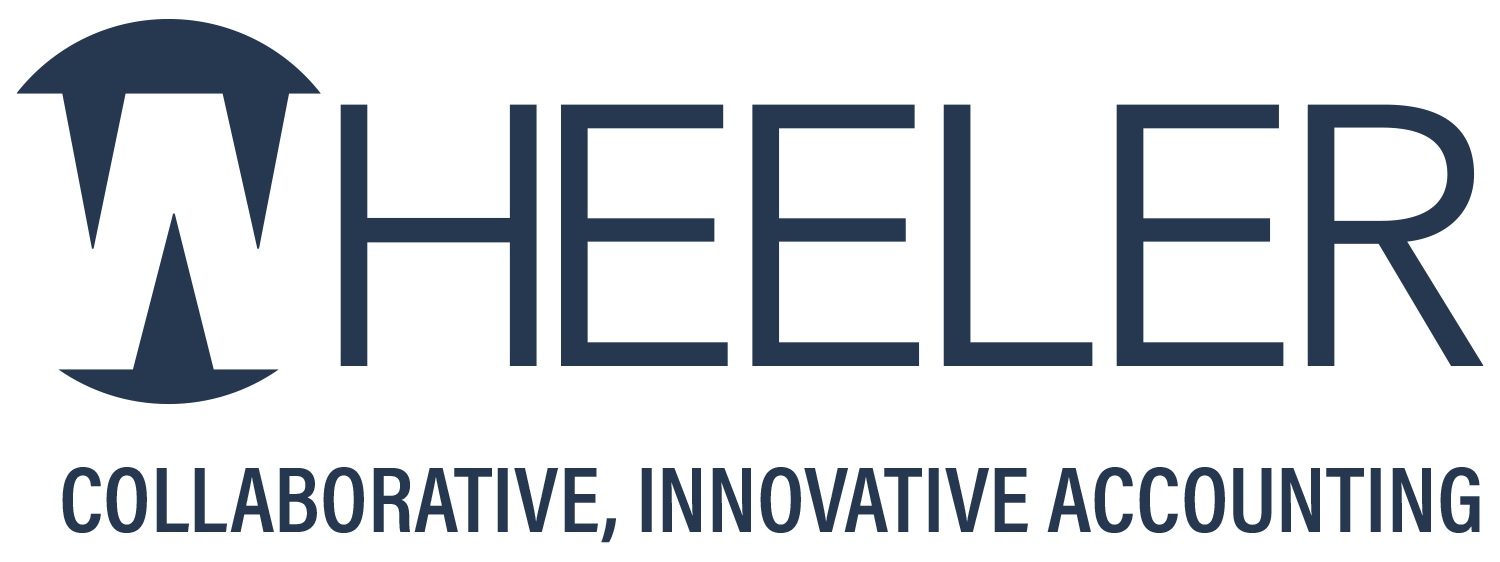Eligible individuals with disabilities and their family members can use ABLE accounts to pay for qualified expenses.
Continue readingIt May Not Be Too Late to Reduce Your 2024 Taxes
If you’re preparing to file your 2024 federal income tax return and your tax bill is higher than you’d expected or your tax refund is smaller than you’d hoped, there might still be an opportunity to change it. If you qualify, you can make a deductible contribution to a traditional IRA until the filing date of April 15, 2025, and benefit from the tax savings on your 2024 return.
Who’s Eligible?
You can make a deductible contribution to a traditional IRA if:
- You (and your spouse if you’re married) aren’t an active participant in an employer-sponsored retirement plan or
- You (or your spouse) are an active participant in an employer plan, but your modified adjusted gross income (MAGI) doesn’t exceed certain levels that vary by filing status.
For 2024, if you’re married, filing jointly and covered by an employer plan, your deductible IRA contribution phases out over $123,000 to $143,000 of MAGI. For single filers or those filing as head of household, this phaseout range is $77,000 to $87,000. It’s only $0 to $10,000 if you’re married and filing separately. If you’re not an active participant in an employer-sponsored retirement plan, but your spouse is, your deductible IRA contribution phases out with MAGI between $230,000 and $240,000.
Deductible IRA contributions reduce your current tax liability, and earnings within the IRA are tax-deferred. However, every dollar you take out will be taxed in full (and subject to a 10% penalty before age 59½, unless an exception applies).
Roth IRA holders may also contribute to their accounts until April 15, though these contributions aren’t tax deductible, and some income-based limits apply. Withdrawals from a Roth IRA are tax-free if the account has been open for at least five years and you’re 59½ or older. Certain withdrawals are tax-free before age 59½ or within the first five years.
How Much Can You Contribute?
If eligible, an individual can make a deductible traditional IRA contribution of up to $7,000 for 2024. The contribution limit is $8,000 for those age 50 and up by December 31, 2024. If you’re a small business owner, you can establish and contribute to a Simplified Employee Pension (SEP) plan up until the due date for your return, including extensions. For 2024, the maximum SEP contribution is $69,000.
Contact the office for more information about IRAs or SEPs, as well as additional strategies to reduce your 2024 taxes. During your tax preparation appointment, you can also ask how to save the maximum tax-advantaged amount for retirement.
408-252-1800
Photo by Anatoliy Karlyuk from Freerange Stock.
Tax-Saving Moves Businesses Should Consider Before Year End
Now is a good time to consider year-end moves that can help reduce your business’s 2024 taxes. The effectiveness of a particular action depends on the circumstances of your business. Here are several possibilities.
Time Income and Deductions
A tried-and-true tactic for minimizing your tax bill is to defer income to next year and accelerate deductible expenses into this year. For example, if your business uses the cash method of accounting, consider deferring income by postponing invoices until late in the year or accelerating deductions by paying certain expenses before year end.
If your business uses the accrual method of accounting, you have less flexibility to control the timing of income and expenses, but there are still some things you can do. For example, you may be able to deduct year-end bonuses accrued this year even if they aren’t paid until next year (if they’re paid by March 15, 2025).
Accrual-basis businesses may also be able to defer income from certain advance payments (such as licensing fees, subscriptions, membership dues, and payments under guaranty or warranty contracts) until next year. These payments may be deferred to the extent they’re recorded as deferred revenue on an “applicable financial statement” of the business, for example, an audited financial statement or a financial statement filed with the Securities and Exchange Commission.
Deferring income and accelerating deductions isn’t right for every business. In some cases, it may be advantageous to do the opposite, that is, to accelerate income and defer deductions. This may be the case if, for example, you believe your business will be in a higher tax bracket next year.
Buy Equipment and Other Fixed Assets
One of the most effective ways to generate tax deductions is to buy equipment, machinery and other fixed assets and place them in service by Dec. 31. Ordinarily these assets are capitalized and depreciated over several years, but there are a few options for deducting some or all of these expenses immediately, including:
Section 179 expensing.
This break allows you to deduct up to $1.22 million in expenses for qualifying tangible property and certain computer software placed in service in 2024. It’s phased out on a dollar-for-dollar basis to the extent Sec. 179 expenditures exceed $3.05 million for 2024.
Bonus depreciation.
This year, you can deduct up to 60% of the cost of eligible tangible property, which includes most equipment and machinery, as well as off-the-shelf computer software and certain improvements to nonresidential building interiors. Now’s the time to take advantage of bonus depreciation, since the deduction limit is scheduled to drop to 40% next year and 20% in 2026 and to be eliminated after that, unless Congress passes new legislation.
De minimis safe harbor.
This provision allows you to expense certain low-cost items used in your business, even if they’d ordinarily be treated as fixed assets that are capitalized and depreciated. If your business has applicable financial statements, you can deduct up to $5,000 per purchase or invoice for these items to the extent that you deduct them for accounting purposes. If you don’t have applicable financial statements, then the limit is $2,500.
Despite the term “de minimis,” the safe harbor makes it possible to immediately deduct a significant amount of property. For example, if you buy 10 computers for your business for $2,500 each, you can deduct as much as $25,000 up front.
Each of these options has advantages and disadvantages and is subject to various rules and limitations. Contact the office for help choosing the most effective strategies for your business.
Fund a Retirement Plan
If you don’t have a retirement plan, establishing one can be a great way to generate tax benefits. It can also improve employee recruitment and retention efforts. Certain employers are entitled to tax credits for starting a new plan.
Whether you start a new plan now or already had one in place, depending on the type of plan, you may be able to take 2024 deductions for contributions you make after year end. Some plans, including simplified employee pensions (SEPs), can be adopted and funded after year end and still create deductions for this year.
Be Prepared to Write Off Bad Debts
Year end is a good time to review your receivables and determine whether any business debts have become worthless or uncollectible. If they have, you may be able to reduce 2024 taxes by claiming a bad debt deduction.
To qualify for the deduction, you’ll need documentation or other evidence that the debt is bona fide. You’ll also need evidence that there’s no reasonable expectation of payment (such as the debtor’s insolvency or bankruptcy) or documentation that you’ve taken reasonable steps to collect the debt. You should also have documentation that the debt was charged off this year, which is required for partially worthless debts and a best practice for totally worthless debts.
Finally, to deduct a bad debt you must have previously included the receivable in your taxable income. Thus, an accrual-basis business can deduct an otherwise eligible bad debt if it’s already accrued the receivable, but a cash-basis business can’t.
Find the Optimal Combination
Whichever year-end tax strategies you explore, it’s critical to understand how they interact with other provisions of the tax code. For example, if you have a pass-through business, claiming significant amounts of bonus depreciation can reduce your Section 199A deduction for qualified business income (QBI). That’s because first-year depreciation deductions reduce your taxable income and your QBI. Contact the office for help selecting the optimal combination of year-end planning strategies for your business.
408-252-1800
Photo by Unsplash from Freerange Stock
Medicare Premiums may Lead to Tax Savings
If you pay Medicare premiums for health insurance, you may be able to combine them with other qualifying expenses and claim them as an itemized deduction for medical expenses on your tax return. This includes amounts for “Medigap” insurance and Medicare Advantage plans, which cover some costs that Medicare Parts A and B don’t cover.
Generally, you can deduct medical expenses only if you itemize deductions and only to the extent that total qualifying health care expenses exceeded 7.5% of your adjusted gross income. But, if you’re self-employed people or a shareholder-employees of an S corporation, you can generally claim an above-the-line deduction for your health insurance premiums, including Medicare premiums. That means it’s not necessary for you to itemize deductions to get the tax savings.
Contact the office with questions about claiming medical expense deductions on your personal tax return. Also, be sure to ask for help identifying an optimal overall tax-planning strategy based on your personal circumstances.
408-252-1800
Did You Overcontribute to Your HSA in 2023?
By Michael Sands
With the conclusion of tax year 2023, you may wish to check if your HSA contributions for tax year 2023 exceeded allowed limits and make corrective distributions, if needed.
What Are HSAs?
To refresh, an HSA is a tax-advantaged savings account that allows you to pay medical expenses with tax-free dollars. The benefits of an HSA include:
- You can claim a tax deduction for contributions you make to an HSA, up to the maximum annual contribution allowed.
- HSA contributions made by your employer are excluded from taxable income.
- Earnings in the HSA account grow tax-free.
- Distributions from the HSA account for qualified medical expense are tax-free.
- An HSA is “portable”; it stays with you if you change employers and contributions remain in your account until withdrawn.
What Expenses Do HSAs Cover?
Most deductible medical expenses will qualify as HSA medical expenses. Medical insurance premiums may not qualify, except:
- Premiums for long-term care coverage
- Health care continuation coverage (such as COBRA)
- Health care coverage while receiving unemployment benefits
- Medicare or other coverage if 65 or older (other than supplemental policies, such as Medigap).
HSA distributions may be taken to pay for medical costs of the HSA account owner, their spouse, or for dependents that have been claimed on tax returns. Medical expenses should not be deducted on Schedule A to the extent they are paid with tax-free distributions from HSA accounts.
To qualify to make HSA contributions, you must be covered under a high-deductible health (HDHP) plan for any months in which contributions are made. High-deductible health plans have higher annual deductibles that other health plans and must have a maximum limit for total annual deductible and out-of-pocket expenses for covered costs. Also, dependents who can be claimed by another person do not qualify to make HSA contributions.
Types of HSAs
There are two types of HSA accounts: self-only coverage and family coverage. Self-only coverage refers to an HSA account used by one eligible individual only and family coverage refers to an HSA account used by one eligible individual and at least one other individual (whether or not they qualify as an eligible individual).
Maximum Contribution Limits
Every year, IRS sets maximum limits for contributions that individuals may make to their HSA accounts. In 2023, for self-only coverage, the maximum contribution was $3,850. For family coverage, the maximum contribution was $7,750. If you had the same type of coverage throughout the year, you can make any contribution up to the maximum annual amount allowed. Persons who are 55 and older may make an additional $1,000 catch-up contribution for the year.
If your HSA coverage changed during the year, or if you did not have HDHP coverage the entire year, you may still make the maximum annual contribution allowed for the year under the “Last Month Rule”, as long as you had high-deductible health insurance as of the first day of the last month of the year. If you elect to make the full contribution under the “Last Month Rule”, you will be required to maintain HDHP coverage for a testing period of at least one year, or the deduction may be recaptured.
If you discontinued HDHP coverage during the year, or if you started Medicare coverage, your allowed HSA contributions may be limited to less than the maximum annual contribution. Please let us know if this happens so we can determine what the allowed HSA contribution and assist you with any needed withdrawal of excess contributions.
Excess HSA contributions can occur for a variety of reasons, including making regular contributions in an amount that is too high for the number of periods made, contributions by the employer that have not been accounted for, other contributions made by family, or administrative errors.
Excess HSA contributions are any HSA contributions made in excess of allowed annual limits. Excess contributions may be subject to a 6% excise tax if they are not withdrawn by the filing date for the tax year (generally April 15 of the following year, or October 15 if an extension has been filed). This 6% excise tax may be assessed for every year the excess contribution is not withdrawn.
Correcting for Overcontribution
There are two methods to correct excess HSA contributions. The first is taking a distribution to withdraw the excess contribution, including any earnings on the distribution, by the regular or extended due date for the tax year. Form 1099-SA will be issued showing the corrective distribution with a code “2”. The employer may issue a corrected W-2 to include excess contributions in wages; if not, the excess contribution should be included as other income when filing your tax returns.
The second method is to apply the excess HSA contribution as a contribution for the subsequent tax year. Only excess contributions may be applied, and any applied will count toward the annual limit for the subsequent year. If there are earnings on the excess contributions applied, this method may involve greater complexity than the first method and Form 5329 may need to be filed with your tax returns.
Either method will avoid the 6% excise tax if withdrawn by the regular or extended due date for the tax year. You may wish to consider filing a tax extension if you need additional time to make corrective distributions.
Please let us know if you think you made excess HSA contributions for tax year 2023 and we will provide any assistance needed.
408-252-1800
How to Secure a Tax Benefit with the QBI Deduction
QBI may sound like the name of a TV quiz show. But it’s actually the acronym for “qualified business income,” which can trigger a tax deduction for some small business owners or self-employed individuals. The QBI deduction was authorized by the Tax Cuts and Jobs Act (TCJA), and it took effect in 2018.
How It Works
The deduction is still available to owners of pass-through entities – such as S corporations, partnerships and limited liability companies – as well as self-employed individuals. But it is scheduled to expire after 2025 unless Congress acts to extend it.
The maximum deduction is equal to 20% of QBI. Generally, QBI refers to your net profit, excluding capital gains and losses, dividends and interest income, employee compensation and guaranteed payments to partners. The deduction can be claimed whether or not you itemize.
Notably, the QBI deduction is subject to a phaseout based on your income. If your total taxable income is below the lowest threshold, you may be entitled to the full 20% deduction, although other limitations do apply:
- For 2023, the thresholds are $182,100 for single filers and $364,200 for joint filers.
- For 2024, the thresholds are $191,950 for single filers and $383,900 for joint filers.
But things get tricky if your income exceeds the applicable threshold. In that case, your ability to claim the QBI deduction depends on the nature of your business.
Specifically, the rules are different for regular business owners of pass-through entities, sole proprietors and those who are in “specified service trades or businesses” (SSTBs). This covers most businesspeople who provide personal services to the public, such as physicians, attorneys, financial planners and accountants. (Engineers and architects are excluded.) Professionals in this group forfeit the QBI deduction entirely if income exceeds another set of limits:
- For 2023, these upper limits are $232,100 for single filers and $464,200 for joint filers.
- For 2024, these upper limits are $241,950 for single filers and $483,900 for joint filers.
If your income falls between the thresholds stated above, your QBI deduction may be reduced, regardless of whether you’re in an SSTB or not. For taxpayers who are in SSTBs, the deduction is phased out until it disappears at the upper income threshold. For other taxpayers, the deduction is limited to the lesser of 20% of QBI or the greater of 1) 50% of the wages paid to employees on W-2s, or 2) 25% of wages plus 2.5% of the unadjusted basis of the qualified property owned by the business.
Available for a Limited Time
The QBI deduction provides a valuable tax break for small business owners, so if it expires, their taxes are likely to go up. It’s unclear at this time what the chance is of the deduction being extended. Contact the office for guidance in determining the best strategy for your personal situation.
408-252-1800
Photo by rawpixel from Freerange Stock.
There May Still Be Time to Lower Your 2023 Tax Bill
If you’re preparing to file your 2023 tax return, you may still be able to lower your tax bill – or increase your refund. If you qualify, you can make a deductible contribution to a traditional IRA right up until the original filing deadline, April 15, 2024, and see tax savings on your 2023 return.
For eligible taxpayers, the 2023 contribution limit has increased to $6,500, or $7,500 for taxpayers aged 50 and up on Dec. 31, 2023. If you’re a small business owner, you can establish and contribute to a Simplified Employee Pension (SEP) plan up to the extended due date of your return. The maximum SEP contribution you can make for 2023 is $66,000.
What determines eligibility? To make a fully deductible contribution to a traditional IRA, you (and your spouse, if you’re married) must not be active participants in an employer-sponsored retirement plan or, if you are, your 2023 modified adjusted gross income (MAGI) must not exceed the applicable limits:
- For single taxpayers covered by a workplace plan, $73,000 (partial deduction available up to $83,000 MAGI).
- For a married couple filing jointly, where the spouse making IRA contributions is covered by a workplace plan, $116,000 (partial deduction available up to $136,000 MAGI).
- If the spouse making the IRA contributions isn’t covered by a workplace plan but his or her spouse is, $218,000 (partial deduction available up to $228,000 MAGI).
For married couples filing separately, where at least one spouse is covered by a workplace plan, the ability to deduct IRA contributions is extremely limited.
Contact the office if you want more information about this important topic to help you save the maximum tax-advantaged amount for retirement.
408-252-1800
Photo by ronnachaipark from Freerange Stock.







